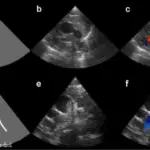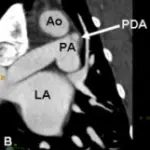Atrial septal defect is characterized by an opening in the interatrial septum, which causes pulmonary circulation to pass directly to the right atrium, left-to-right shunt. Severity of manifestation varies depending on the extent of the defect. It has three types: ostium secundum, ostium primum, and sinus venosus.
What is the Pathology of Atrial Septal Defect?
Atrial septal defect pathology consists of an opening between the right and left atrium which leads to enlargement of the right and left atrium, as well as the main pulmonary artery. Most common cause is the non-closure of foramen ovale.
How does Atrial Septal Defect Present?
Atrial septal defect is 10% of all congenital heart diseases with ostium secundum consisting of 75% of all atrial septal defect cases. It occurs mostly in female patients and symptoms present by 40 years old in 90% of the untreated population. It presents as dyspnea on exertion, fatigue, palpitation, sustained arrhythmia, and/or evidence of heart failure.
How is Atrial Septal Defect Diagnosed?
Atrial septal defect is diagnosed based on chest x-ray, 2D echo, MRI, and electrocardiogram.
How is Atrial Septal Defect Treated?
Atrial septal defect can be managed with surgery or interventional catheterization.
What is the Prognosis of Atrial Septal Defect?
Atrial septal defect prognosis is good, with post-surgery improving the patient’s condition and reducing morbidity and mortality.



